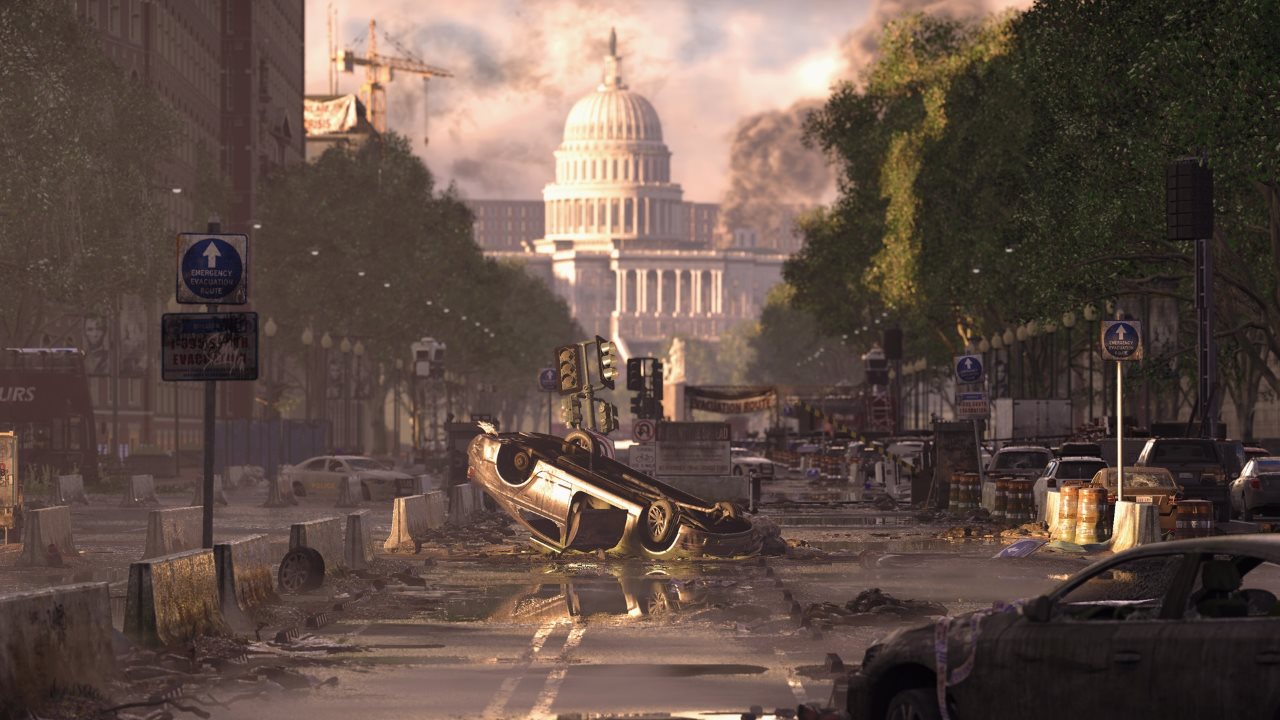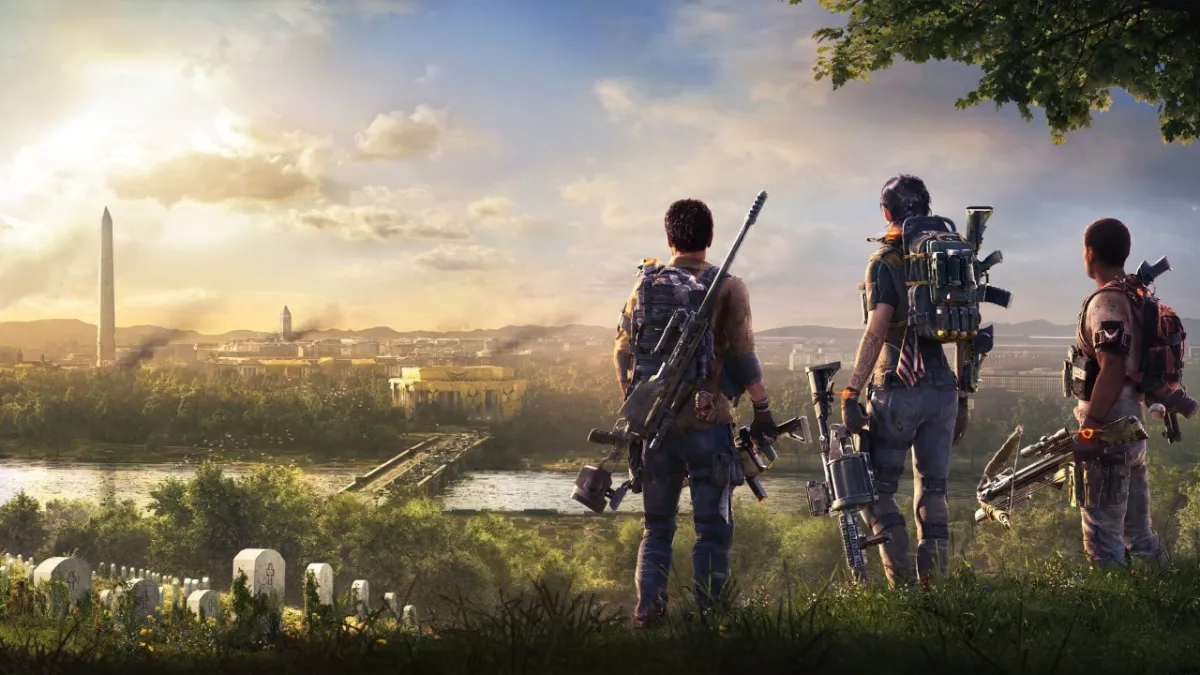Tom Clancy’s The Division was at the forefront of the current looter shooter craze that has given us a ton of hits and an almost equal number of massive disappointments. While The Division wasn’t a perfect experience, and required some additional work from Ubisoft to get its endgame and long term plans in order, it ended up being easily one of the better loot-based shooters out there. Heading into Tom Clancy’s The Division 2 there was the question of how the team at Massive might approach it. Would they reinvent the wheel or would they go for a more refinement and fine-tuning approach? The answer is firmly in the latter, with The Division 2 feeling like a fantastic sequel in most regards, doubling down on what worked, fixing what didn’t, and delivering more looter shooter action for fans to sink hundreds of hours into.
Set a few months after the events of the first game, The Division 2 once again tasks you with cleaning up the mess left behind by the Dollar Flu. Now that it has spread outside the confines of New York, there is utter chaos practically everywhere in the US. While out on a routine mission, a distress call comes in from Washington DC. Your character heads there to help out, finding another post-apocalyptic area full of rogue agents, bandits, and other nefarious actors. Using your Division skills, tech, and friends you’ll have to secure the area and win it back for the good guys.
Right off the bat it’s clear once again that story and plot take a back seat to gameplay. Is there a story? Yes. Does it make a lot of sense? Not really. And that’s just fine because after those opening moments and aside from a few particularly significant missions, it doesn’t come up often. The world is in chaos, DC has been taken over by lawless groups of bandits, and you are one of the few people who can do anything about it. If you weren’t fully versed in the lore of the first game, not much will make sense right out of the gate here. The game doesn’t burden itself with the confines of a story and the player should accept that going in.

This allows for a laser-like focus to be placed onto the gameplay, and for good reason. The Division offered some truly exceptional third-person shooter gameplay, and it has only gotten better with The Division 2. Everything from aiming and shooting to taking cover and using your abilities just feels right. It’s smooth, everything makes sense, and it all works so seamlessly that after the opening hours it will simply become second nature. Is there anything revolutionary in the gameplay? Nope, but that’s not really what fans are looking for.
What they (likely) want and what they get is a total refinement on the formula present in The Division. Everything here feels familiar because it is. There’s no major shifts in the gameplay or alterations that reshape what makes the game work. For fans that is great, but it also means that if you didn’t enjoy the first title, you won’t be swayed by its sequel. For those who latched onto The Division’s looter shooter style, this is one of those great sequels that adds onto what you already love.
Weapons are decently varied, though it feels as though there are a few key types you’ll have to use. Cover is plentiful, and running between safe points is a dream to control. You’ll spend most of your time within the game hunkered down, popping out to take a few shots whenever the opportunity presents itself, but with friends you can make that happen through proper communication. And it’s with friends where The Division 2 really shines, though in a nice treat most of the game can actually be played by yourself with little worry. The eight available special abilities help with this, and offer a great amount of tactical choices during combat. And with each kill there’s a good chance of some nice loot drops, as The Division 2 is not stingy with its rewards.
However, not all is perfect within the gameplay. Enemy AI is somewhat of a mixed result. Their chatter is superb, with enemies telling each other their own status (reloading!) or yours (he’s behind the truck!), but their actions aren’t all that intelligent. I can’t count how often enemies simply charged my position, running through open terrain, only to stand still while I blasted them away. This does allow for some tense moments where you get surrounded or flanked, and it seems like that was well planned, but it just feels like the overly aggressive AI getting a lucky result.

Thankfully enemies have been fixed in one significant way: they’re no longer obvious bullet sponges. Unless you go into a mission underleveled most enemies die after a proper amount of hits. Higher level enemies do soak up a ton of damage, but this is explained using thick armor that you can chip away by focusing on specific weak points. Combat makes much more sense this time, even if it feels similar on the whole.
The Division 2 offers one thing that its predecessor didn’t: Washington DC
Beyond that though, The Division 2 offers one thing that its predecessor didn’t: Washington DC. The NYC map in the first game was excellent and featured a near lifelike recreation of one of the world’s best cities. DC feels just as good, if not better. Having recently visited our nation’s capital, it was truly fun and surreal wandering the landscape of DC, picking out landmarks and familiar places. But that’s not all that The Division 2’s map offers, as it’s also where the game actually tells its story.
Environmental storytelling is all the rage in video games these days, and The Division 2 does very well at it. Each section of the map is controlled by some faction of marauders, and within them you can find tiny stories about how the world came to be in this state, how people handled it, and what the future may hold for the area. While the overarching plot involving Air Force One may seem important, it’s more background noise that occasionally comes to the forefront, while the map tells it’s own story, and does so while delivering a well designed, unique, and interesting place to do all of your looting and shooting.
Around every corner there’s something new to do or see, whether it’s some dilapidated building, or a settlement of survivors, or something a lot worse. Of course, this does start to get into the few issues I found with The Division 2, which starts with just how much stuff there is to do. Yes, content is good, and the lack of it has been the downfall of other loot-based shooting games. However, The Division 2 over corrects in a fashion, bombarding the player with way too many interest points, missions, and other tasks all at once. Should all of this stuff be in the game? Yes, but maybe dole it out a little slower and more methodically.

This is also true of what is otherwise an exceptionally designed UI. At any point while you play The Division 2 your screen will simply be filled with information, typically displayed in some of the tiniest text available. There’s checkpoints, nearby missions, vendor icons, your HUD, text scrawl, and much more all on display all the time. Once you get more familiar with the game and how all of this information fits into your current objective, it works fine, but for first time players it can be extremely overwhelming. This goes beyond the visuals though, as the game inundates you with tasks to accomplish at all times.
Throughout the campaign you have Settlements to upgrade, projects to complete, crafting materials to collect, weapons to find/unlock, skills to unlock and upgrade, and more than I can possibly break down here without going on for many more paragraphs. If you like checking off boxes on a to-do list then The Division 2 will keep you occupied for hours upon hours upon hours. If you’re easily distracted by whatever new thing pops up though, you won’t get very far on any single thing.
These are minor quibbles though in the face of what Ubisoft and Massive Entertainment have put together here though. The Division 2 plays well, is well designed, builds off its predecessor, and offers a very healthy chunk of content to chew through. And all of that is without getting into the endgame or Dark Zone (PvP multiplayer) material that will surely take weeks for the community to fully dissect. It also looks great and runs fantastic on PC, though character models could use some touching up, and the game will likely never blow anyone away with its graphical fidelity outside the impressively large environments and amount of details within the world.
The Verdict
Tom Clancy’s The Division 2 is the ideal sequel for those who enjoyed its predecessor. It builds on what worked, changes what didn’t, and delivers a great new map to explore. It is somewhat unique within the looter shooter genre in that it is launching with plenty of content and a stable foundation off which Massive can build something truly great. Could more have been done to grow from the original? Sure, but why fix what wasn’t broken?











Published: Mar 17, 2019 10:01 am